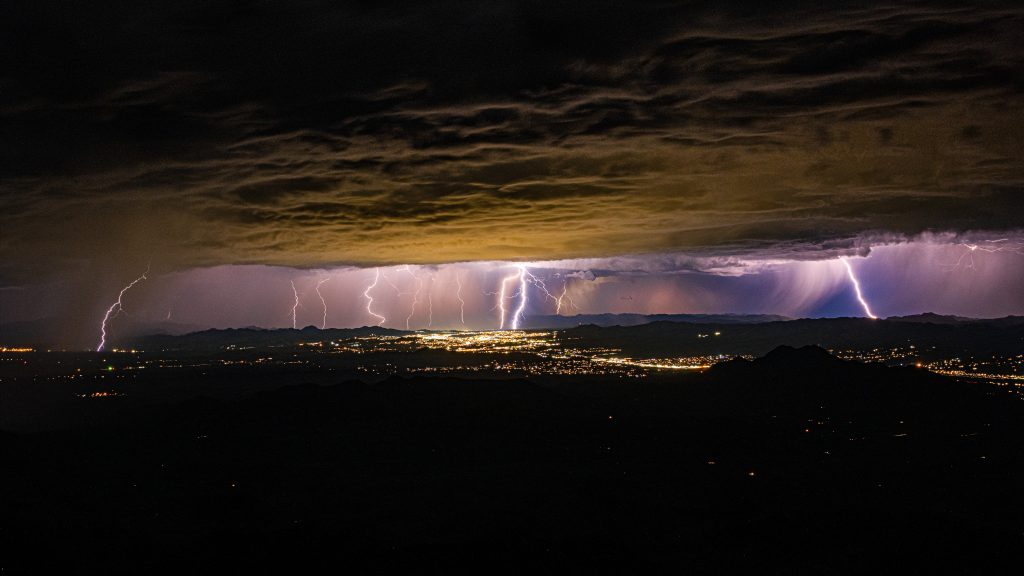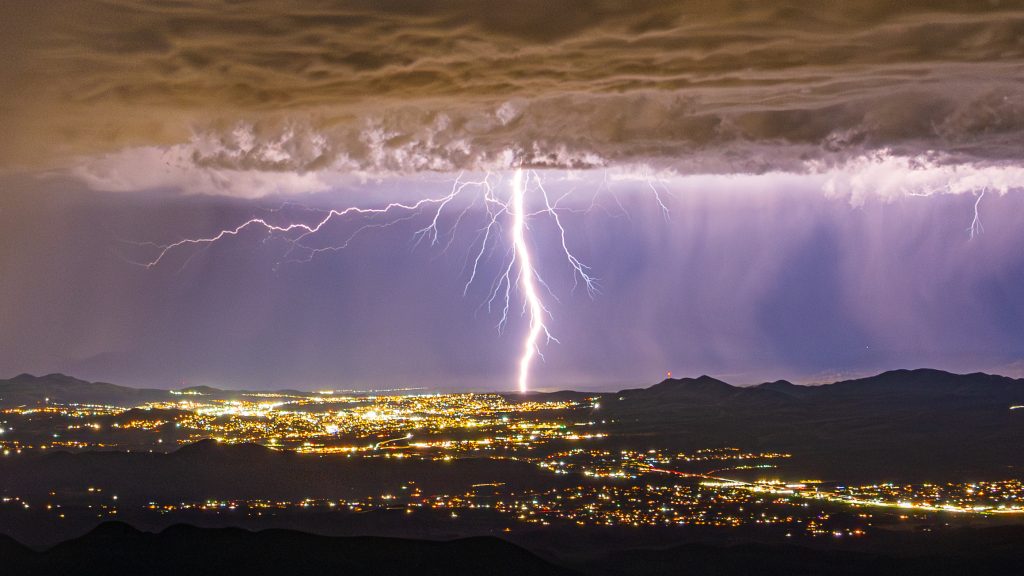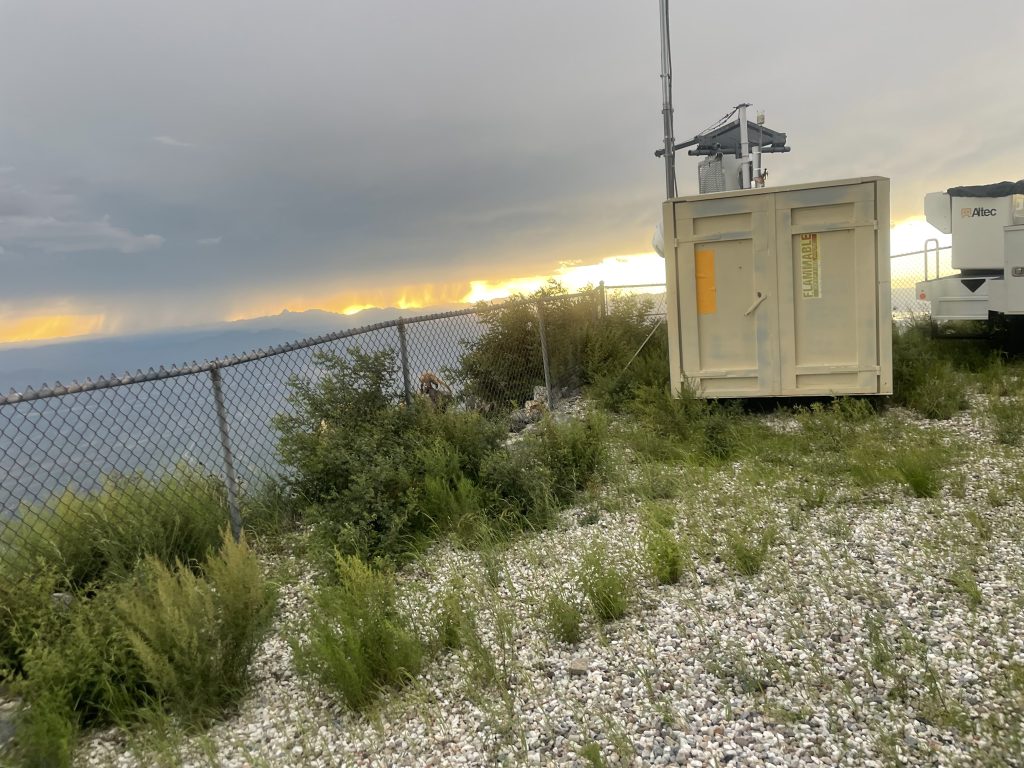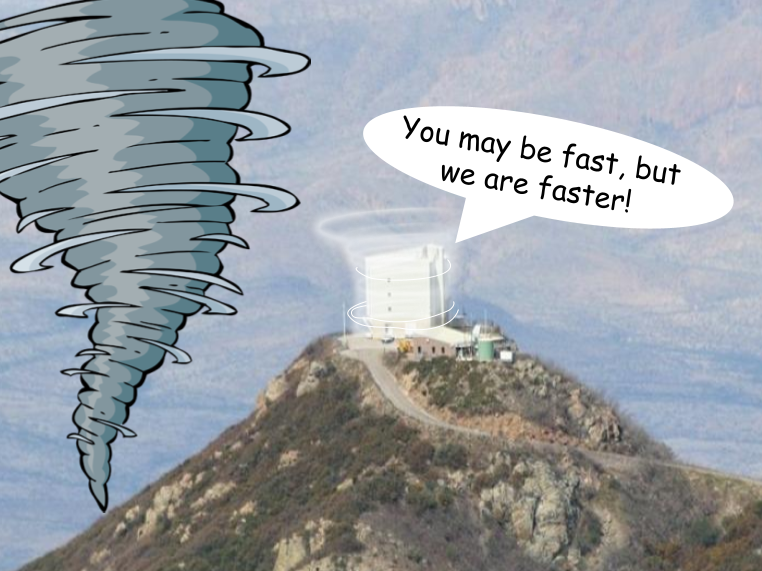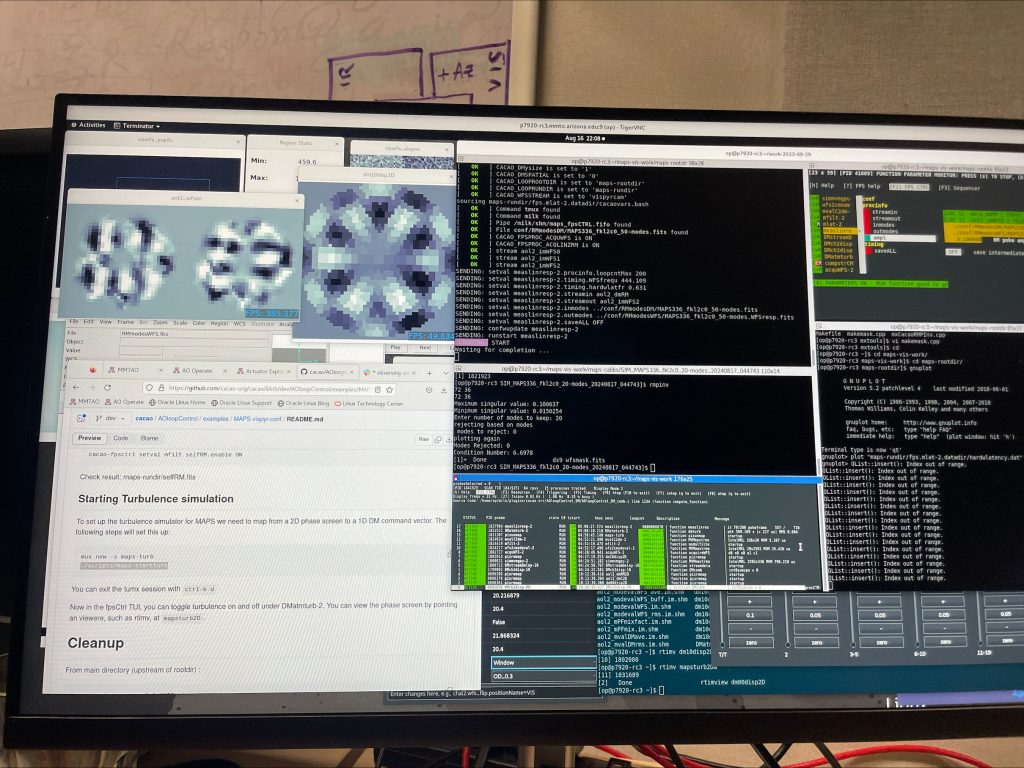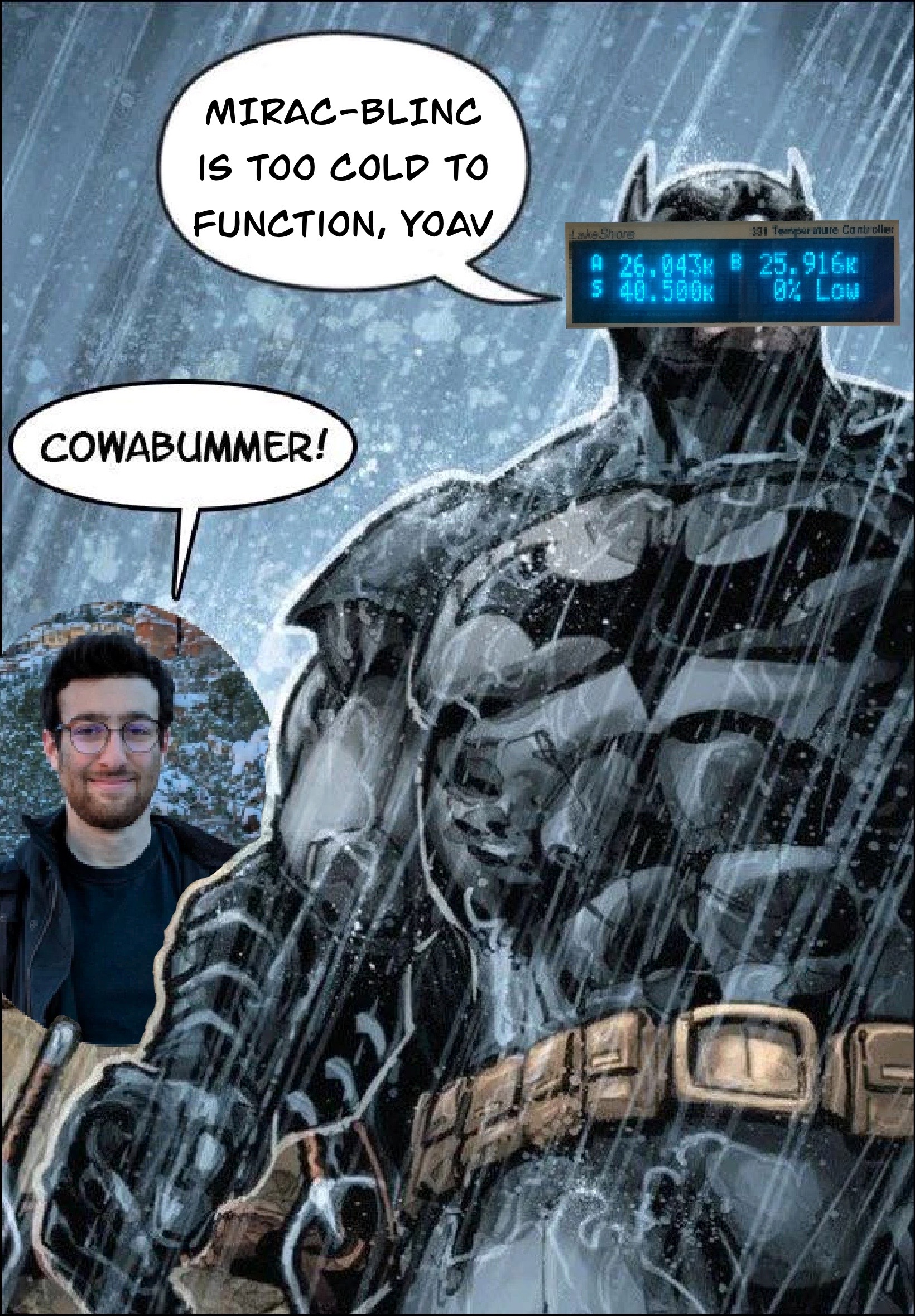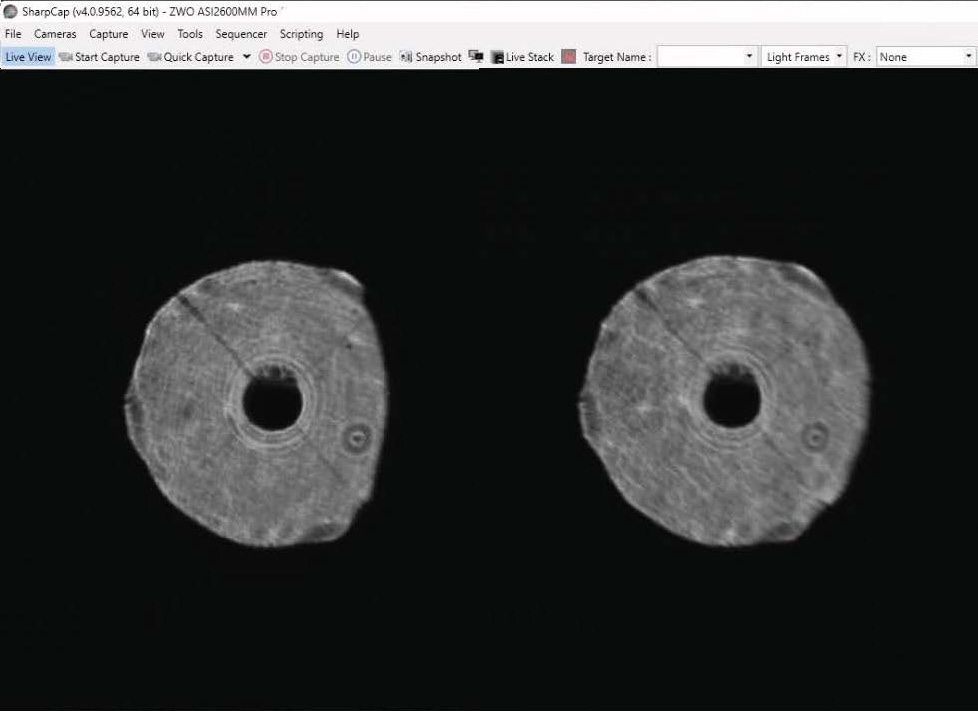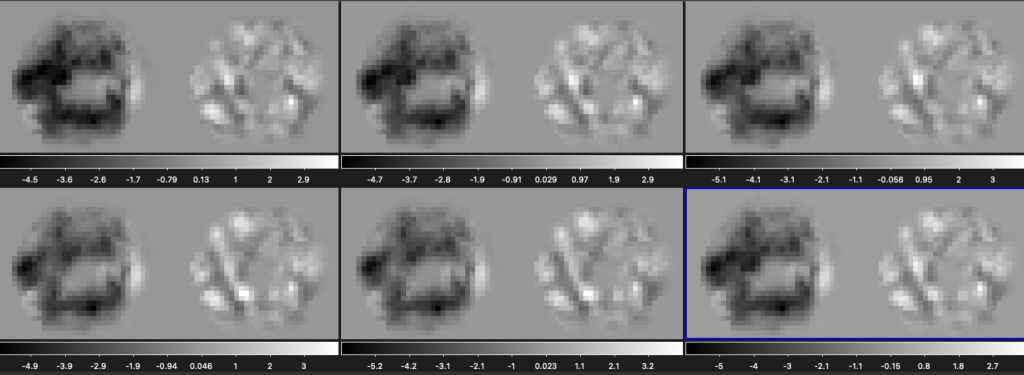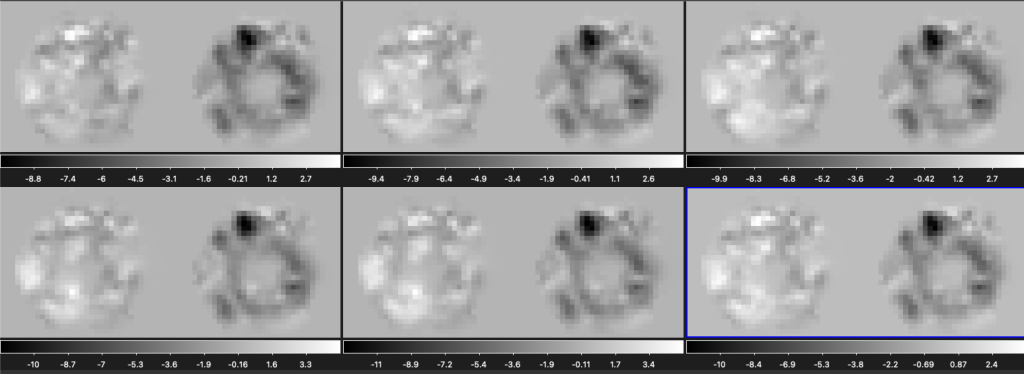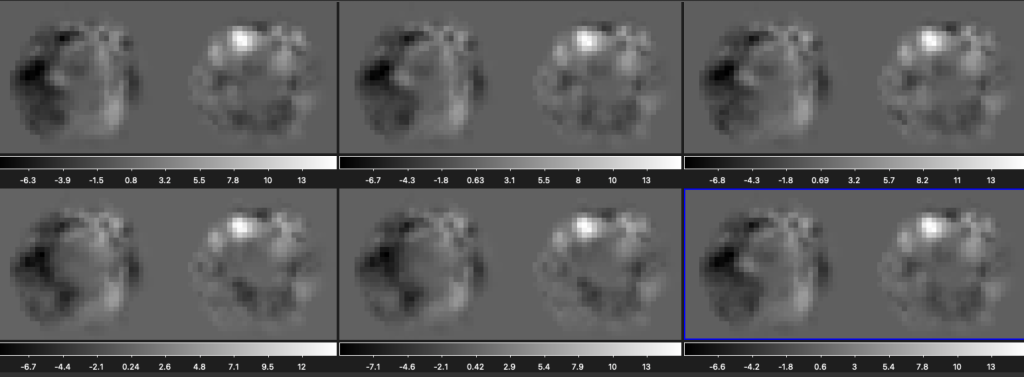Welcome to the last blog for the MAPS August 2024 observing run!
The evening started off with Grant and Oli performing an LED strip test that would allow us to more clearly see out of focus images on our pupil lens and visible wavefront sensor. The LED light strip was placed in front of the ASM, along the radius of the shell. Our pupil image was clearly out of focus. Ideally, the circles of light (each individual LED bulb) should not be overlapping. They should look as they would if you were to look directly at the LED strip itself. The VIS WFS image looks better, as you can see more defined pixels of light.
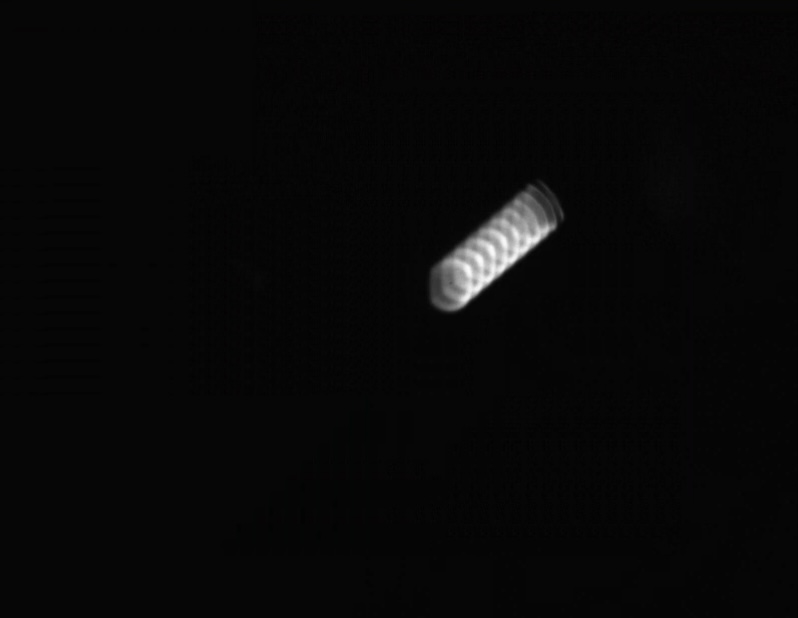
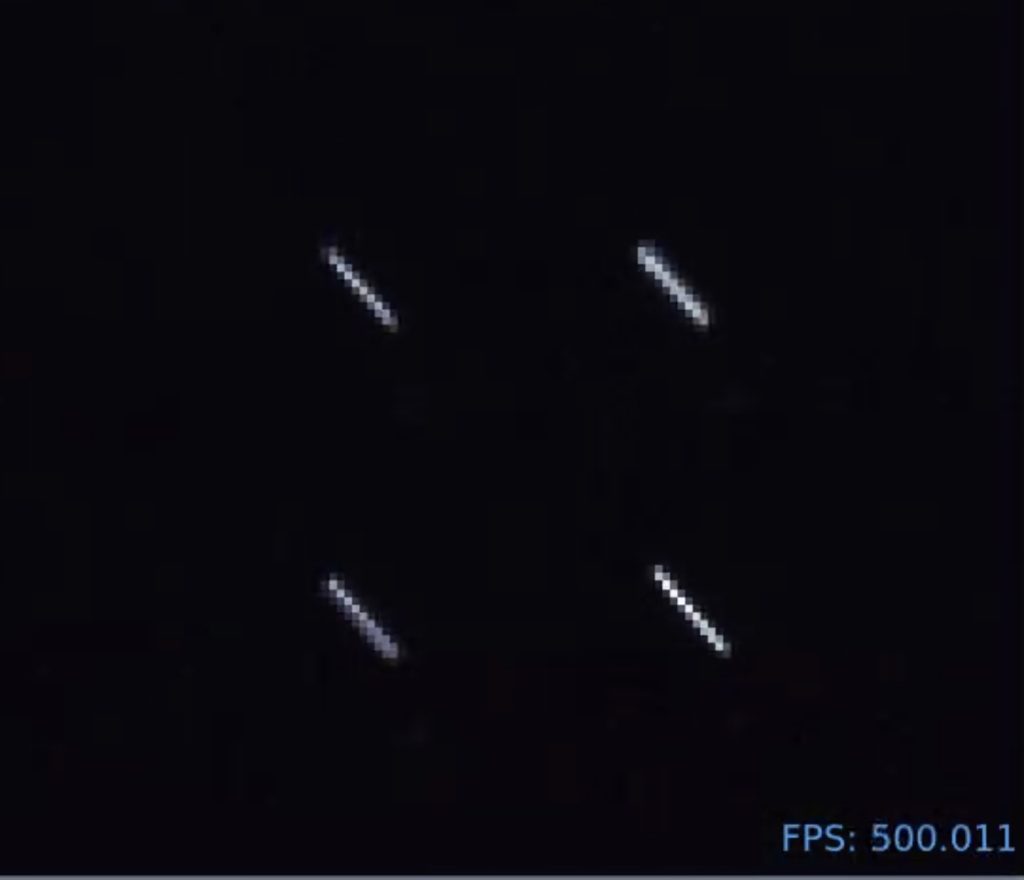
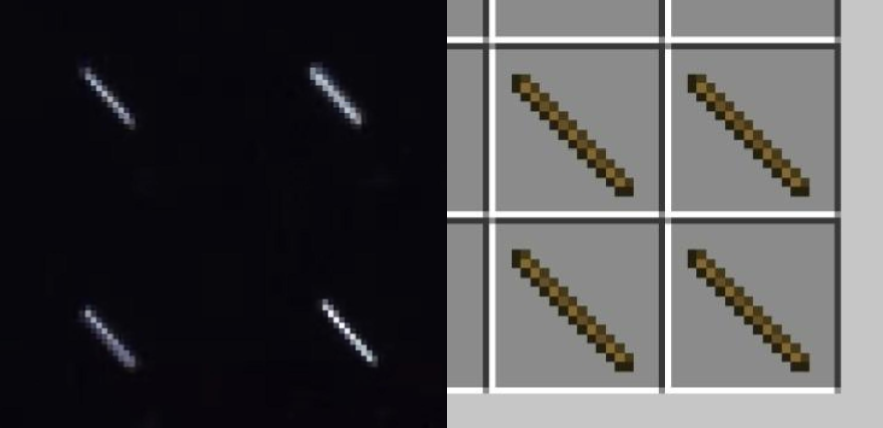
After waiting for a few storms to dissipate, we get straight to doing some AO. Amali closes the loop on 50 modes, then closes on a whopping 100 modes shortly after. The 50 mode loop had a 1.4 lambda/D full width half maximum, and the 100 mode loop had a 1.8 lambda/D FWHM. GO TEAM! Tonight’s honorable target was FK5 0672, theta Herculis.
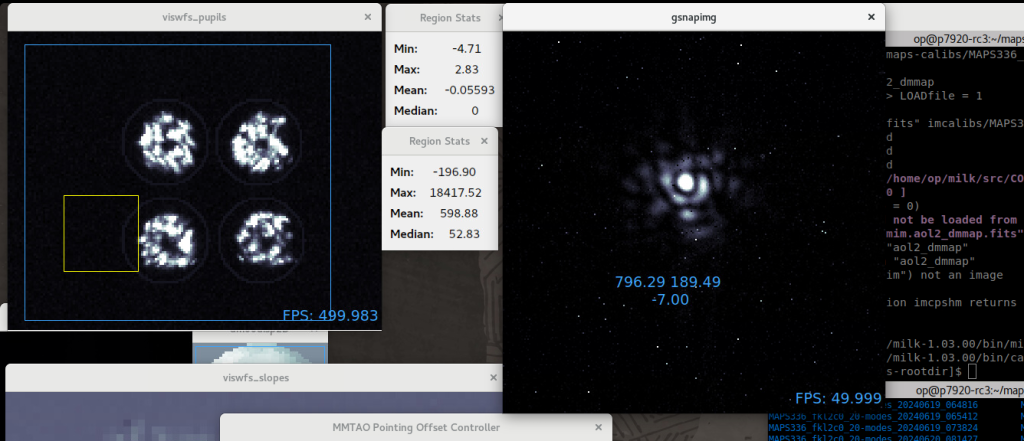
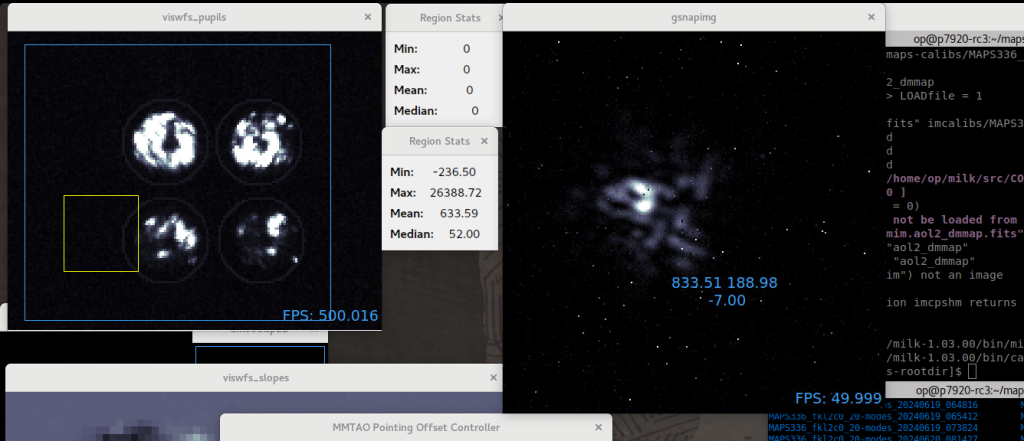
Bonus Jared quote of the night: “We need more monitors.”
Now we hand things over to Grant and Oli. They battle the on and off cloudy weather as they work on VIS pyramid alignment.
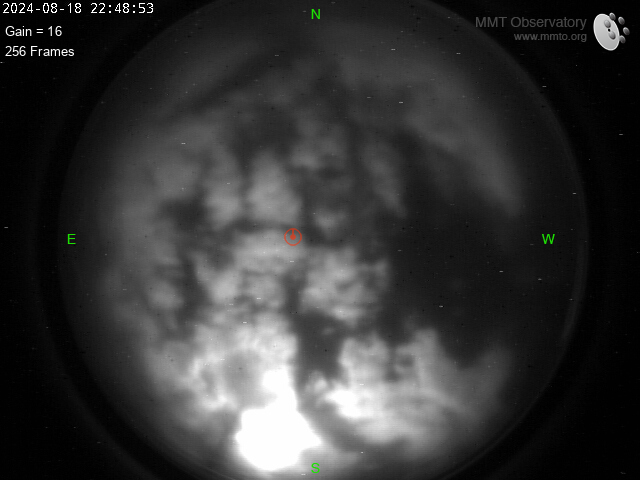
After they scrambled the topbox (moved the vis CTL and CCID75), the VIS WFS pupils looked VISibly better.
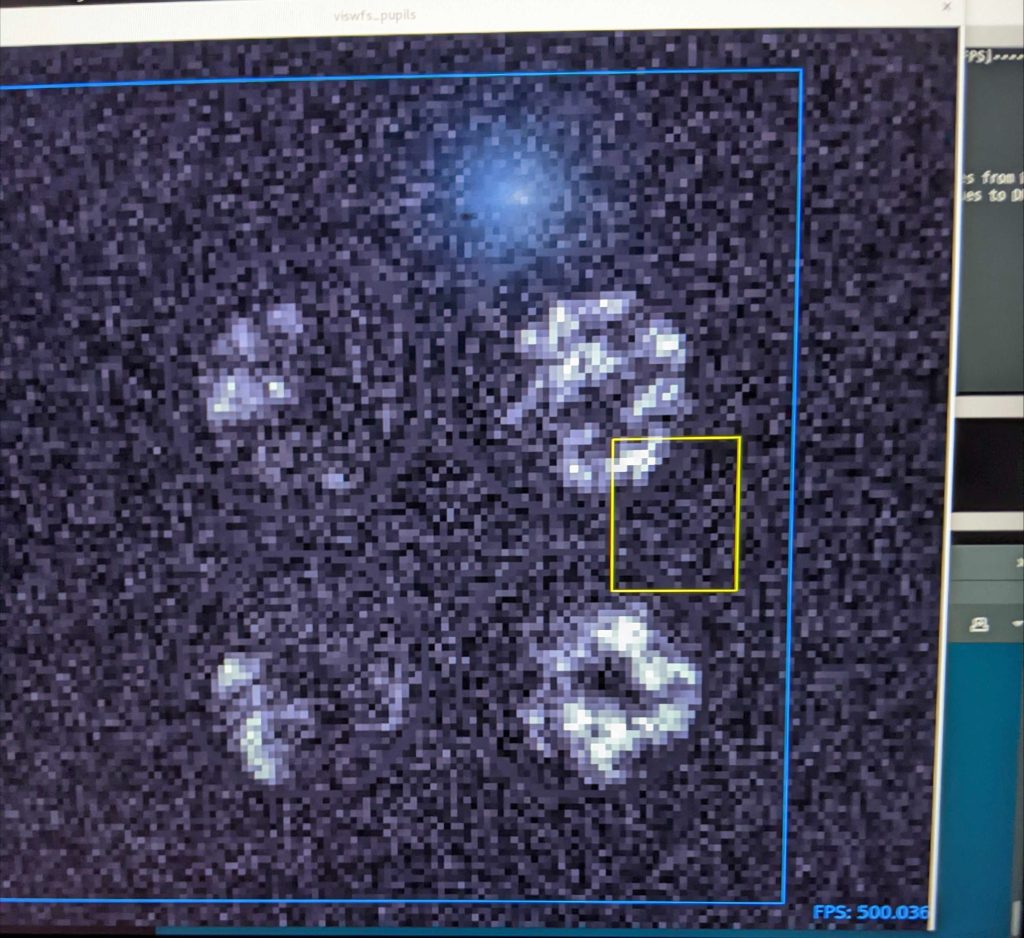
With our new, beautiful WFS pupils, Amali, Bianca, and I take turns taking 50 and 100 mode response matrices. The image below is a 50-mode self RM, which confirms we are sensing the same modes that are being poked.

Unfortunately, AO had to come to a halt with about an hour left of observing time. While taking some RM’s, we noticed a giant red blob on our actuator position and current map. Red blobs are not good, as they indicate contamination in the ASM. What could this contaminant be? We are not sure yet, but it could be anything from a detached magnet to a bug seeking warmth.
That brings us to the end of the August 2024 MAPS run! I haven’t even hit the one year mark of working with the MAPS team, but I can still say that I am proud of how far we’ve come since my first run.
Goodnight MMT, goodnight air, goodnight stars, goodnight ladybugs and abnormally large daddy long leg spiders that are everywhere.
:・゚✧:・.☽˚。・゚✧:・.:
As we all make our way home, I would like us to keep the song of the night in mind: “On the Road Again”, but specifically Donkey’s version from Shrek.
